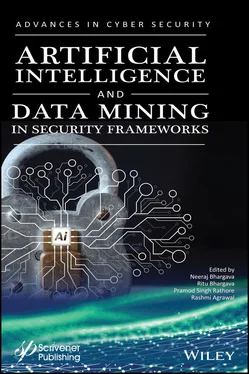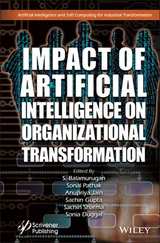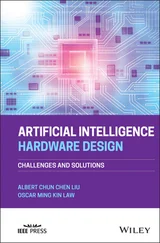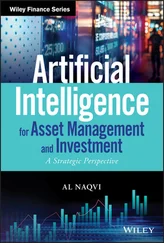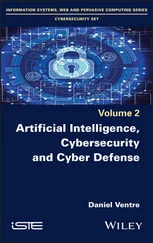11 Chapter 11Figure 11.1 Conventional system for cyber security.Figure 11.2 Cyber security with supervised and unsupervised machine learning.Figure 11.3 Cyber-attack attribution rules through association rule mining.Figure 11.4 Supervised learning (Classification) and Unsupervised learning (Clus...Figure 11.5 Different stages for detecting cyber attack through data mining.
12 Chapter 12Figure 12.1 Intrusion detection system.Figure 12.2 Web-based intrusion detection system.Figure 12.3 Host-based Intrusion Detection SystemFigure 12.4 Application Protocol-based Intrusion Detection System (APIDS).Figure 12.5 Hybrid intrusion detection system.Figure 12.6 Misuse detection expert system (MDES).Figure 12.7 Signature-based analysis in IDS.Figure 12.8 Data mining in intrusion detection system.Figure 12.9 Classification tree.Figure 12.10 Regression tree.Figure 12.11 Model of modified decision tree algorithm.Figure 12.12 Stream of attack detection.
13 Chapter 13Figure 13.1 The Architecture of the experimental framework.Figure 13.2 Scatter plot of the collected data.Figure 13.3 Output GUI with sample output.Figure 13.4 Flowchart for the firefly algorithm ( Singh Rathore, P. et al. 2020 ).Figure 13.5 Blood pressure measuring GUI.Figure 13.6 Heart Rate measurement GUI.Figure 13.7 Oxygen measurement GUI.Figure 13.8 Warning message GUI.Figure 13.9 Cloud database value.Figure 13.10 GUI for optimal, best and worst parameters.
14 Chapter 14Figure 14.1 Gesture recognition product growth over Asia-Pacific regions (Source...Figure 14.2 Gesture classification.Figure 14.3 (a) Operations in Image Enhancement (b) Hand gestures in the process...Figure 14.4 Image acquisition taxonomy.Figure 14.5 Vision controlled remote (www.zdnet.com).
15 Chapter 15Figure 15.1 The capacity of spam emails 4th zone 2018 to 1st area 2019.Figure 15.2 Representation of an email server structure and process of spam filt...Figure 15.3 Structure of neural network (NN).Figure 15.4 Fuzzy set e-mail filtering manner workflow from person mailbox.
1 Chapter 1Table 4.1 Aspect of machine learning method in botnet detection system.
2 Chapter 8Table 8.1 Sample of featured extraction using ILBP method.Table 8.2 Comparison table.
3 Chapter 11Table 11.1 Common cyber attacks and their description.Table 11.2 Popular Data Mining Tools for cyber security.
4 Chapter 12Table 12.1 IDS type comparative.
5 Chapter 14Table 14.1 Comparison of classifiers.Table 14.2 Comparison of exiting vision based.
6 Chapter 15Table 15.1 Freely available email spam collection.
1 Cover
2 Table of Contents
3 Title Page
4 Preface
5 Copyright
6 Begin Reading
7 About the Editors
8 Index
9 End User License Agreement
1 v
2 ii
3 iii
4 iv
5 xiii
6 xiv
7 xv
8 xvi
9 xvii
10 1
11 2
12 3
13 4
14 5
15 6
16 7
17 8
18 9
19 11
20 12
21 13
22 14
23 15
24 16
25 17
26 18
27 19
28 20
29 21
30 22
31 23
32 24
33 25
34 26
35 27
36 28
37 29
38 30
39 31
40 33
41 34
42 35
43 36
44 37
45 38
46 39
47 40
48 41
49 42
50 43
51 44
52 45
53 46
54 47
55 48
56 49
57 50
58 51
59 52
60 53
61 54
62 55
63 56
64 57
65 58
66 59
67 60
68 61
69 62
70 63
71 65
72 66
73 67
74 68
75 69
76 70
77 71
78 72
79 73
80 74
81 75
82 76
83 77
84 78
85 79
86 80
87 81
88 82
89 83
90 84
91 85
92 87
93 88
94 89
95 90
96 91
97 92
98 93
99 94
100 95
101 96
102 97
103 98
104 99
105 101
106 102
107 103
108 104
109 105
110 106
111 107
112 108
113 109
114 110
115 111
116 112
117 113
118 114
119 115
120 116
121 117
122 119
123 120
124 121
125 122
126 123
127 124
128 125
129 126
130 127
131 128
132 129
133 130
134 131
135 132
136 133
137 134
138 135
139 136
140 137
141 138
142 139
143 140
144 141
145 142
146 143
147 144
148 145
149 146
150 147
151 148
152 149
153 150
154 151
155 152
156 153
157 154
158 155
159 156
160 157
161 158
162 159
163 160
164 161
165 162
166 163
167 164
168 165
169 166
170 167
171 168
172 169
173 170
174 171
175 173
176 174
177 175
178 176
179 177
180 178
181 179
182 180
183 181
184 182
185 183
186 184
187 185
188 186
189 187
190 188
191 189
192 190
193 191
194 192
195 193
196 194
197 195
198 196
199 197
200 198
201 199
202 200
203 201
204 202
205 203
206 204
207 205
208 206
209 207
210 209
211 210
212 211
213 212
214 213
215 214
216 215
217 216
218 217
219 218
220 219
221 220
222 221
223 222
224 223
225 224
226 225
227 226
228 227
229 229
230 230
231 231
232 232
233 233
234 234
235 235
236 236
237 237
238 238
239 239
240 240
241 241
242 242
243 243
244 244
245 245
246 247
247 248
248 249
249 250
250 251
251 252
252 253
253 254
254 255
255 256
256 257
257 258
258 259
259 260
260 261
261 262
262 263
263 264
264 265
265 266
266 267
267 268
268 269
269 270
270 271
271 272
272 273
273 274
274 275
275 276
276 277
277 278
278 279
279 280
280 281
281 282
282 283
283 284
284 285
285 286
286 287
287 288
288 289
289 290
290 291
291 293
292 294
293 295
294 296
295 297
Scrivener Publishing100 Cummings Center, Suite 541J Beverly, MA 01915-6106
Advances in Cyber Security
Series Editor: Rashmi Agrawal and D. Ganesh Gopal
Scope: The purpose of this book series is to present books that are specifically designed to address the critical security challenges in today’s computing world including cloud and mobile environments and to discuss mechanisms for defending against those attacks by using classical and modern approaches of cryptography, blockchain and other defense mechanisms. The book series presents some of the state-of-the-art research work in the field of blockchain, cryptography and security in computing and communications. It is a valuable source of knowledge for researchers, engineers, practitioners, graduates, and doctoral students who are working in the field of blockchain, cryptography, network security, and security and privacy issues in the Internet of Things (IoT). It will also be useful for faculty members of graduate schools and universities. The book series provides a comprehensive look at the various facets of cloud security: infrastructure, network, services, compliance and users. It will provide real-world case studies to articulate the real and perceived risks and challenges in deploying and managing services in a cloud infrastructure from a security perspective. The book series will serve as a platform for books dealing with security concerns of decentralized applications (DApps) and smart contracts that operate on an open blockchain. The book series will be a comprehensive and up-to-date reference on information security and assurance. Bringing together the knowledge, skills, techniques, and tools required of IT security professionals, it facilitates the up-to-date understanding required to stay one step ahead of evolving threats, standards, and regulations.
Читать дальше
